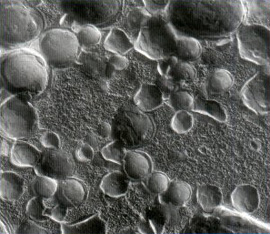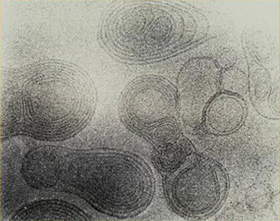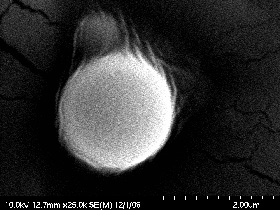The invention story of QuSome penetration technology.
Dr. Brian Keller, PharmD

From the mid-1980s, when research on drug delivery systems (drug delivery) had just begun, to the end of that period, I was fascinated by research reports and literature that liposomes were a miracle drug. Liposomes were developed by a British biologist and physician, Alec Bangham, in the early 1960s and were used for research on biological membranes until the 1980s. Until then, liposomes as a means of transportation had various applications in the middle of research, but there were only a few researchers who explored their application to dermatology and skincare. I was very interested in the fact that liposomes are very small vesicles with a diameter of 1/50th of human hair and can deliver ingredients into the skin, so I started researching this field.

Fortunately, in 1993, a colleague who was close to me introduced me to Dr. Michael Mezei. Dr. Mezei was a professor at Dalhousie University in Halifax, Nova Scotia, Canada. He was the first scientist to apply liposomes to skincare products and is considered the founder of liposomes for skin. I became interested in his research papers and deep knowledge of liposome structures that can maximize the efficacy of active ingredients, and a long relationship with him began both professionally and personally. He taught me everything about liposomes and their application to skincare. After learning the most effective liposome structures and usage, I developed a liposome gel containing 4% lidocaine, a skin anesthetic, which became famous as LMX4. This product was the first topical medication in the United States to use liposomes.
Although successful in applying liposomes to local anesthetics, it was understood that there were negative factors towards the technology. Using liposomes in skincare products is not easy. It requires years of research and experience. Therefore, teaching other scientists and technicians how to produce products using liposomes was inefficient and difficult.
In addition, mass production of the developed product was difficult and required advanced technology and skills. Also, the raw material phospholipids were costly and required special processing. Furthermore, the produced liposomes became unstable after a long period of time, making them unsuitable for skincare products with a minimum shelf life of two years. For these reasons, I wanted to develop a new generation of liposomes that could be applied to various products with many effective ingredients.

The discovery of QuSome began with the discovery of a special lipid that replaces phospholipids. This lipid is unique in that it naturally forms capsules (vesicles) when water is added. This lipid is a component of QuSome. I spent day and night in the laboratory to find my own lipid similar to the phospholipids that make up liposomes.
Finally, when I discovered the correct combination and molecular composition, I purified the lipid that shone beautifully in a golden color (to me, it looked like gold) and mixed it with water. Then, a white, cloudy lipid was formed. The fact that it turned white and cloudy was a good sign because it meant that small particles were mixed in. However, I questioned whether these particles could deliver effective ingredients to the skin and body, and whether this lipid contained a "miracle drug."
I sent a sample of this mixture of lipids and water to my friend and colleague, Dr. Dan Leschick, who was very famous at the time for his research on liposomes and known as a world-renowned expert. He had a special microscope that could easily see the small molecules of liposomes. He was very surprised to see the Qusome for the first time. He sent me an email with a microscope photo of the Qusome saying, "This is a new type of liposome made from a material other than phospholipids. It's amazing!

When I saw that photo, I felt the new era of liposome technology. The wonderful small particles floating in water were clearly reflected in the microscope. The size of those particles is nano-sized, with a diameter of 70-150 nanometers. They are strong enough to hold about 50 cubic centimeters on the tip of a needle, and they are stable even when combined with cream, lotion, or gel. They are also gentle on most sensitive skin.
Inside each container of b.glen skincare products, there are billions of QuSome capsules per container. The development of QuSome meant an innovative way to make skincare products more effective and gentler on the skin than traditional liposomes. As you can imagine, when this development was successful, I was very excited and relieved at the same time. After years of research and development, the new method of making liposomes has become much easier than before. The new lipids are less expensive than traditional liposomes, so QuSome is cost-effective, smaller, stable, and efficient. It also has the potential to revolutionize how effective ingredients are delivered to the human body.
Since its development, QuSome has been applied to many drugs. By using this penetration technology in skincare products, it is now possible to deliver effective ingredients that previously only sat on the surface of the skin to the deeper layers of the skin most effectively.

